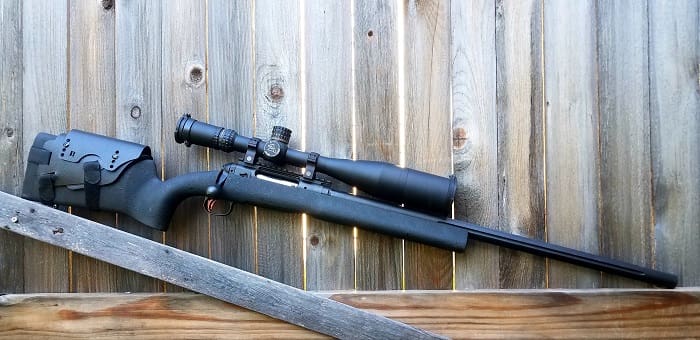
After almost two decades of the industry focusing on shooting more ammunition more faster, it’s great to witness the rebirth of precision shooting of all types. With that renewed interest has come wide industry product support.
Gone are the days when a new shooter had to sell a kidney and maybe a child to get a competitive bolt gun. Savage Arms, a longtime manufacturer of great bolt action rifles that hit well outside their price range, proves that you can get a heck of a lot of gun for not a heck of a lot of money with the Model 12 Long Range Precision rifle.
The Savage Model 12 LRP is the company’s entry level rifle in their Target Line. Focused on shooting off bags or from the bench, it’s on the lighter end of the rifles in the group, and is one of the few in that line that would also serve as a reasonable rifle for PRS and other modern precision shooting sports.
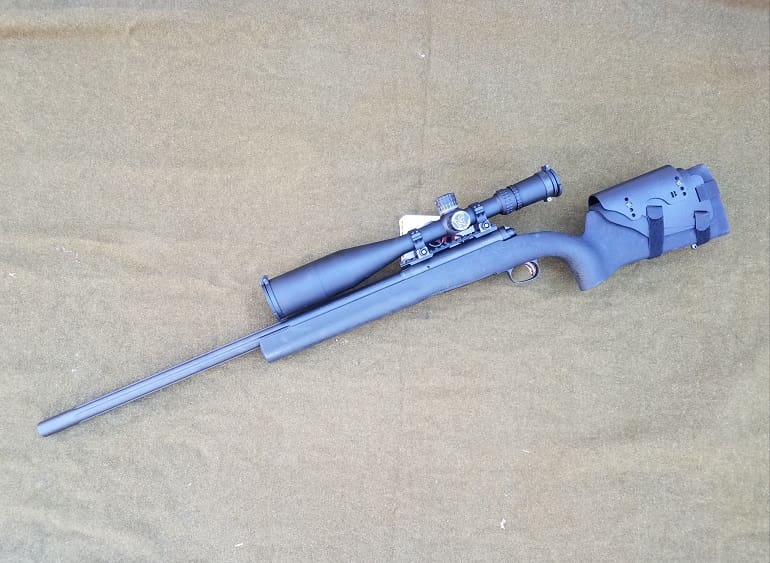
The particular rifle I used for this review is owned by another TTAG writer. When I picked it up for review, it didn’t include a barrel log book (SHAME!), but it had somewhere between a couple hundred and less than a thousand rounds through it.
I only put 300 more through it for this review over the month I had it. That’s about 10% of the barrel life and plenty to figure out if there was something wrong with the reliability of the gun.
There isn’t.
Model 10, 110, or 12, it’s still a Savage bolt action rifle. I’ve said it before, and I’ll keep saying it, if there was one bolt action rifle I owned to walk out of the house with and know it would perform anywhere in the world, it’s my Savage 110 in .30-06.
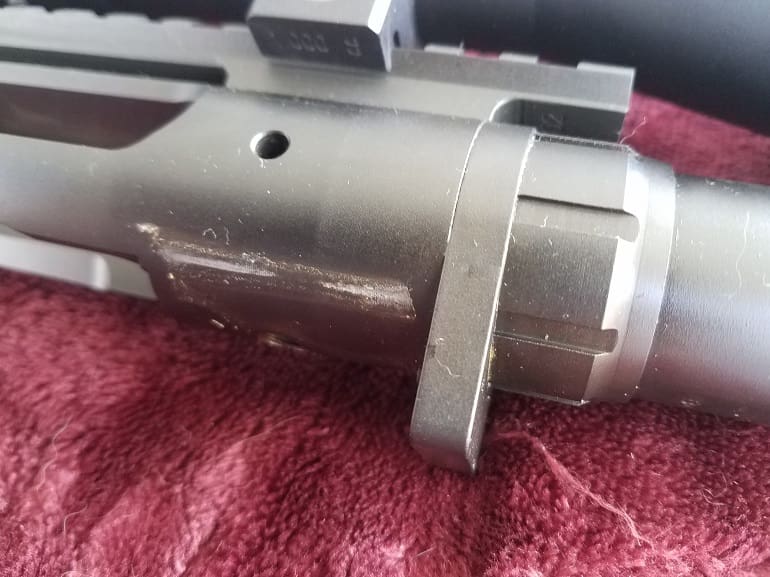
This is Savage’s Target Action, which as far as I can tell, means it’s Savage’s action with the Target AccuTrigger. It is not the single shot solid bottom metal version that I thought was the Savage Target Action. This one, obviously, has bottom metal cut out for the magazine.
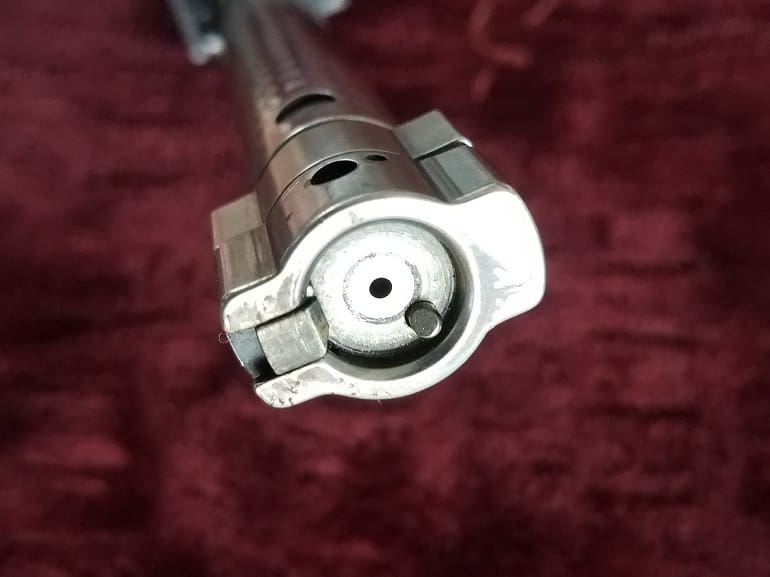
It has the same smart floating bolt head design it has always had, allowing the shooter to swap out bolt heads within a family of cartridges. It also uses the same barrel nut system, allowing the shooter to easily and inexpensively swap out barrels with just a couple of gauges and a barrel nut wrench.
This is particularly valuable if you intend to shoot the three calibers (.243 Win, 6.5 CM, and .260 Rem) that this rifle is available in. Shoot a lot — and I hope you do — and you’ll be needing a new barrel eventually. (Hopefully sooner rather than later!)
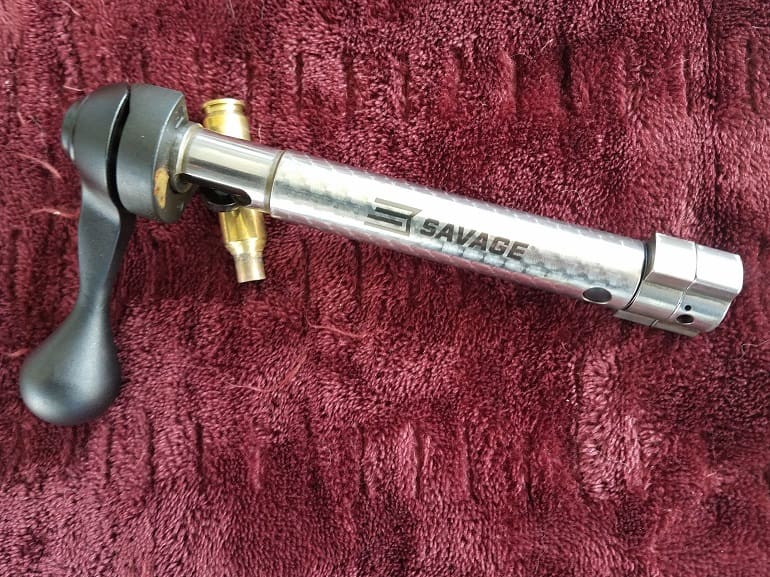
With that action, you’ll find a machine jeweled bolt, with its traditional squared flush bolt lugs. I’m not a huge fan of machine jeweled bolts.
A jeweled bolt, done right, catches the eye and shines like, well…a jewel. It is indicative of the fine care taken on a truly custom firearm. Machine jeweled bolts, like this one, tend not to catch the light much, and generally look worn right out of the box.
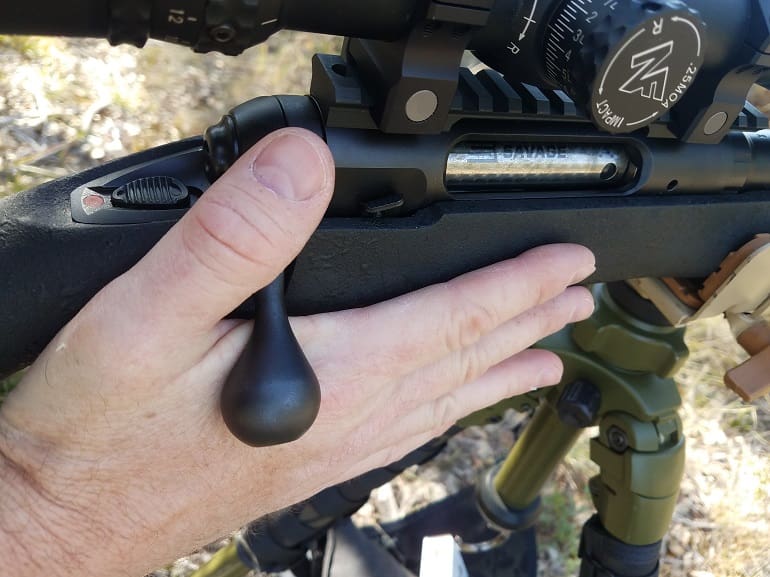
That bolt includes a very enlarged bolt knob. If this were a hunting or a brush gun, that knob sticking out would be an issue. But it isn’t, and it’s not.
Instead, it means that the shooter can quickly throw the firing hand up to get under the bolt with the web of the hand and rapidly work the action for a sure ejection and reload.
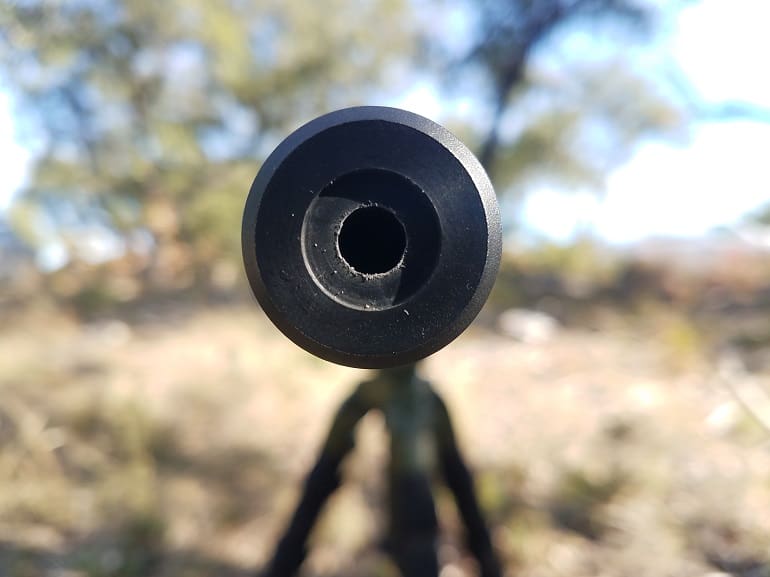
The Model 12 Long Range Precision rifle features a heavy 26″ barrel. Six deep flutes run most of the length of the barrel. The button rifled tube features a 1:8 twist, which should have no issues stabilizing bullets in the 120-149 grain weights common in the 6.5 Creedmoor.
With the length and profile of the heavy barrel, the balance of the rifle is a few inches in front of the receiver, even with the heavy stock and a heavy scope mounted. My only disappointment is that it is not threaded.
Yes, a suppressor on the end of a 26″ heavy barrel makes for a long, heavy gun. But since this gun was meant to sit on bags or on a bench anyway, adding the option of keeping it quiet certainly wouldn’t hurt, and could only serve to keep everyone’s hearing safe.
That said, I fully realize very few target-focused rifles share this feature.
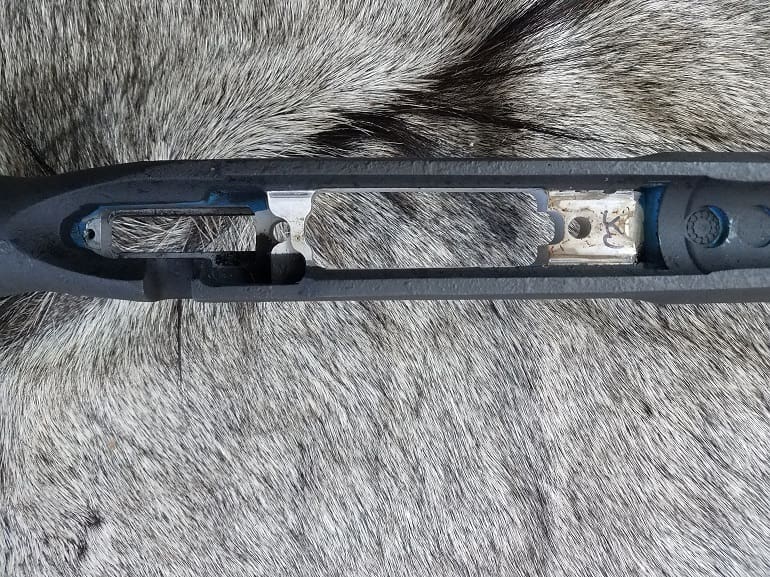
The Model 12 Long Range Precision rifle’s fiberglass stock is custom-made for Savage by H-S Precision, a company with a well deserved reputation for long range precision stocks, and includes the integral “V-Block” aluminum bedding block.
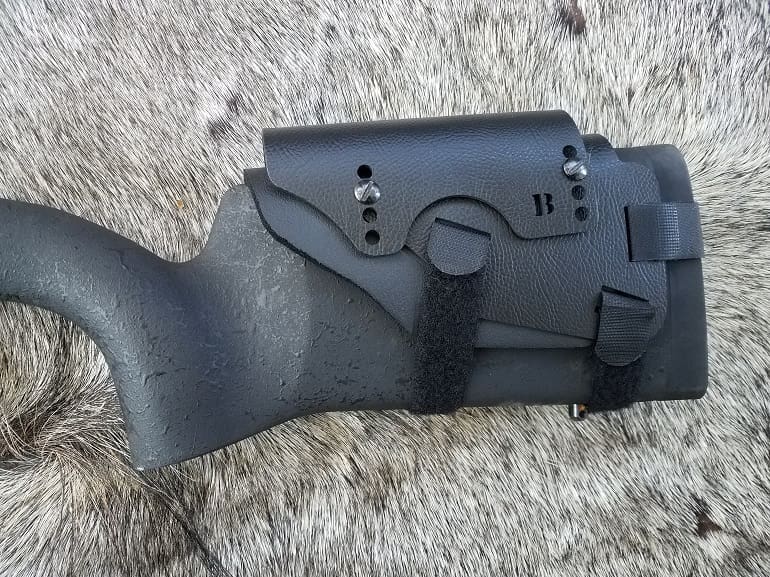
This particular stock has no adjustment for length-of-pull or comb height. Many shooters, (like the one who owns this gun already has), would do well to purchase an aftermarket cheek piece. If you so prefer, you could do like lots of shooters have been doing for decades, and tape down a kitchen sponge or two until you get the right height instead.
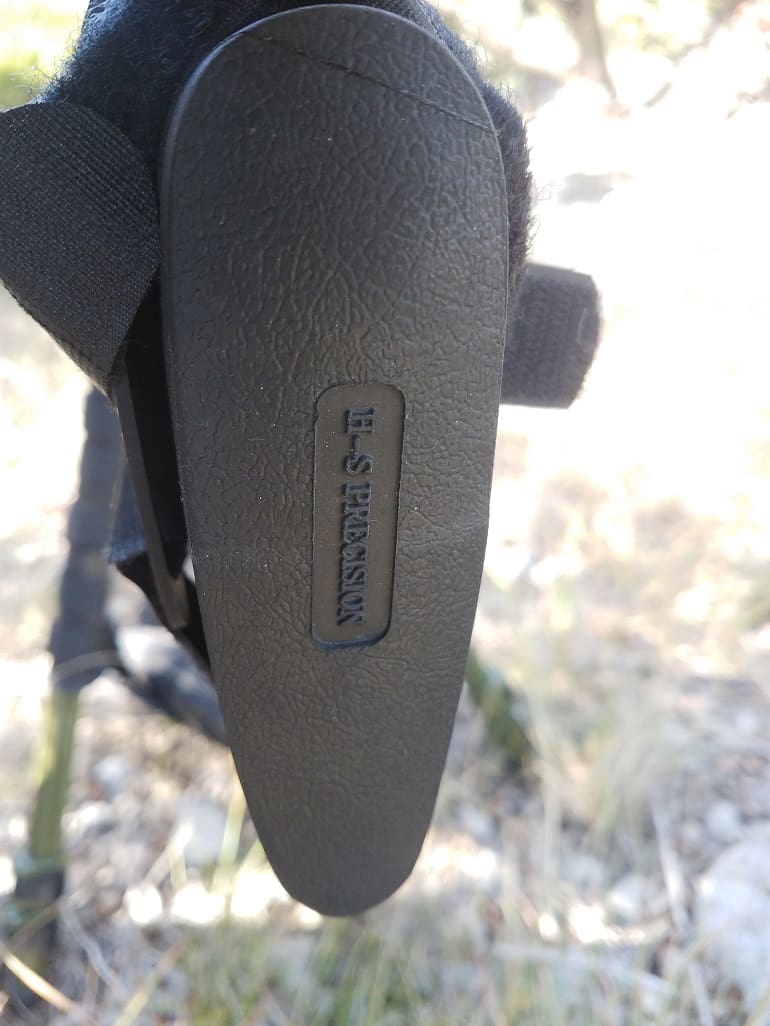
The lack of a length of pull adjustment is a concern, but you could always shim it up if more space was needed. It’s always a little harder to take those inches away, which is why those of smaller stature may need to reconsider this rifle, or be willing to do a little surgery to get the stock where you need it.
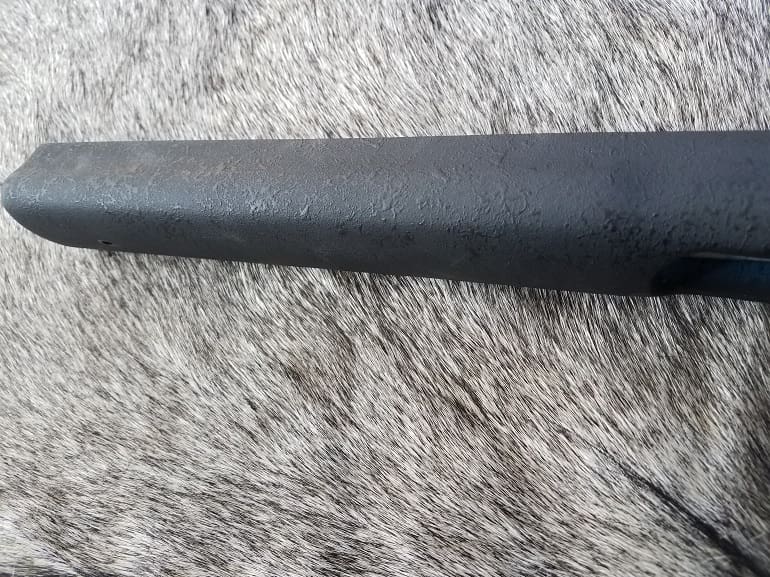
The HS Precision stock made for this Model 12 includes a wide palm swell with a vertical drop on the grip. It also includes a very wide, flat fore stock with a rounded flare at the bottom. This makes for ideal shooting from a front bag.
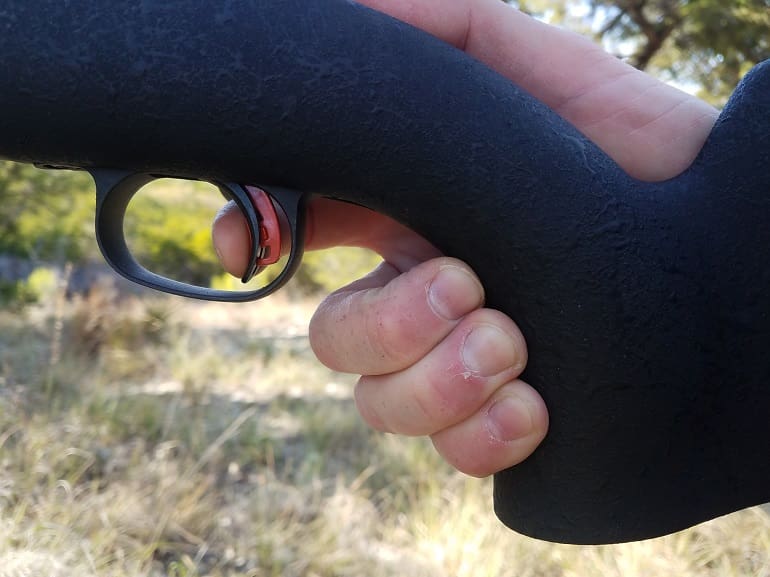
It’s also just narrow enough to fit inside the Hog Saddle Pig Saddle and tripod I’ve come to love. But just barely. Still, with the wide swell along the sides, the saddle gets a great grip on the gun, and it’s very stable from this position.
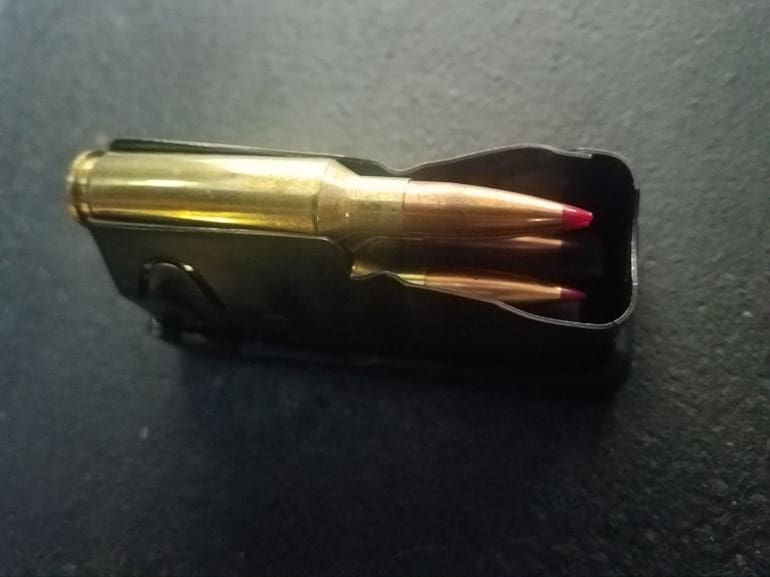
The standard Savage short action detachable box magazine holds four rounds, double stacked with the exception of the top round. I was able to load a round in the chamber, then load a full magazine, although it required a good amount of pressure to do so.
The bolt never had any issue pushing the round from the magazine. The magazine never failed to load, lock, or drop easily with the press of the magazine release, just forward of the box.
At 11 lbs empty, she’s a hefty girl. With the Nightforce NXS 8-32X56 scope mounted and a full magazine, the Model 12 LRP rifle tips the scales at 15 lbs. That’s without a bipod.
That weight shows you exactly what this rifle is made for — carrying little, shooting much. In any of the calibers it’s chambered in, the Model 12 Long Range Precision has almost no noticeable recoil.
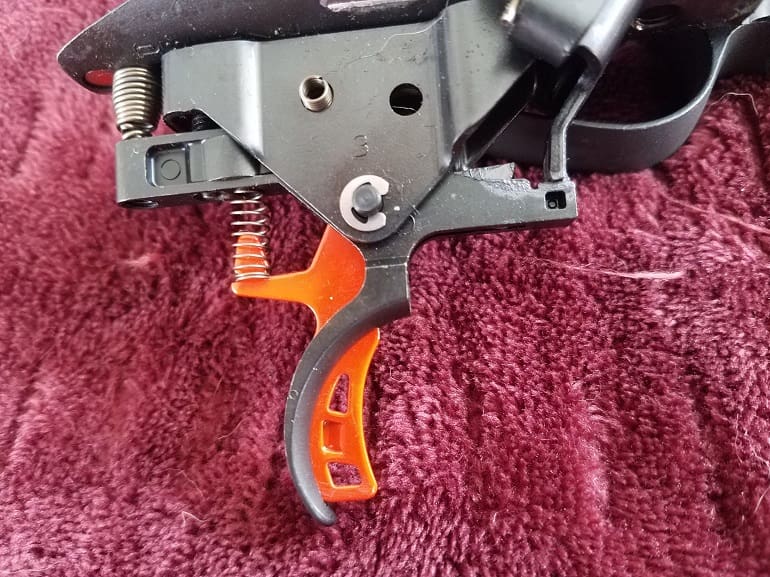
The trigger, however, is plenty light. Especially if you want it to be. I didn’t realize that the Savage’s AccuTrigger came in two different varieties. This one is their “Target AccuTrigger” and it adjusts from 2.5 lbs all the way down to a scant 6 oz.
This one was set at 14.4 oz on my Lyman trigger scale, just barely shy of a single pound.
At 6 oz, triggers go off when you carefully touch them. Savage keeps this from happening, as well as accidental detonations, with the integral blade of the AccuTrigger line. That blade, once depressed, moves the sear block out of the way prior to the actual trigger being pulled.
Without it, even if the sear dropped from being jarred, the block should keep the firearm from discharging. Should.
I had the opportunity to let several new shooters try their hands at tiny groups with this gun. Three shooters, only one of whom had ever shot a center-fire rifle before and even then not much, got behind the gun.
With just few rounds of practice, two of them were able to hit a 1″ target 3 for 3 at 100 yards off a bench. (The third guy couldn’t hit a 19″ silhouette at 50. He was just terrified of the gun. We’ll keep working on him.)
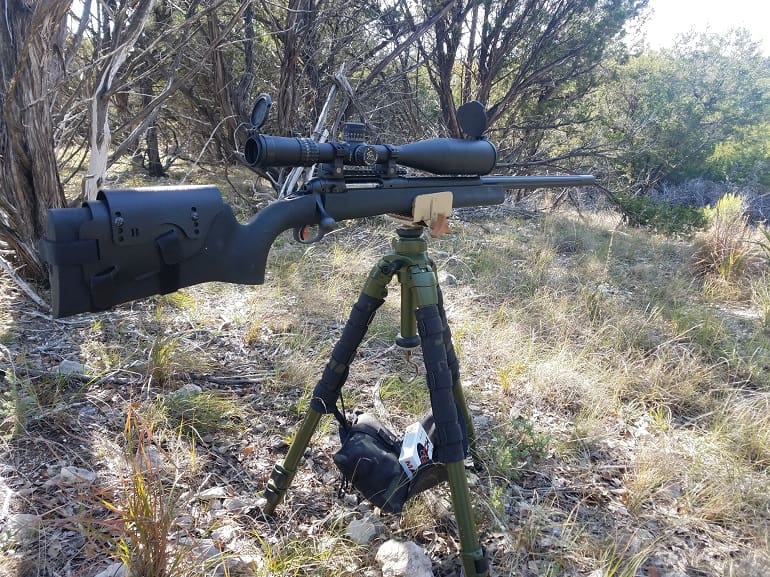
It’s really that easy a gun to shoot. Much of that is due to the stable platform of the Model 12 LRP’s stock, the feather-light trigger, and the simple mass of the rifle.
It’s not easy to carry, and it’s not easy to shoot extended strings off-hand. But that’s not what this gun is for. Rested on, well, anything, this gun is an easy, rewarding shooter.
For a stock rifle of its kind in this price range, the Model 12 Long Range Precision performs very well. Fortunately, 6.5 Creedmoor ammunition is extremely easy to find now. It’s at every one of my local gun stores, Cabela’s, and even the feed store nearest our farm.
Shooting 20-round boxes, I fired four five-round groups and averaged the results of each box. All shooting was accomplished with the supplied Nightforce NXS 8-32X56 turned to 32X magnification from a Caldwell Stinger shooting rest.
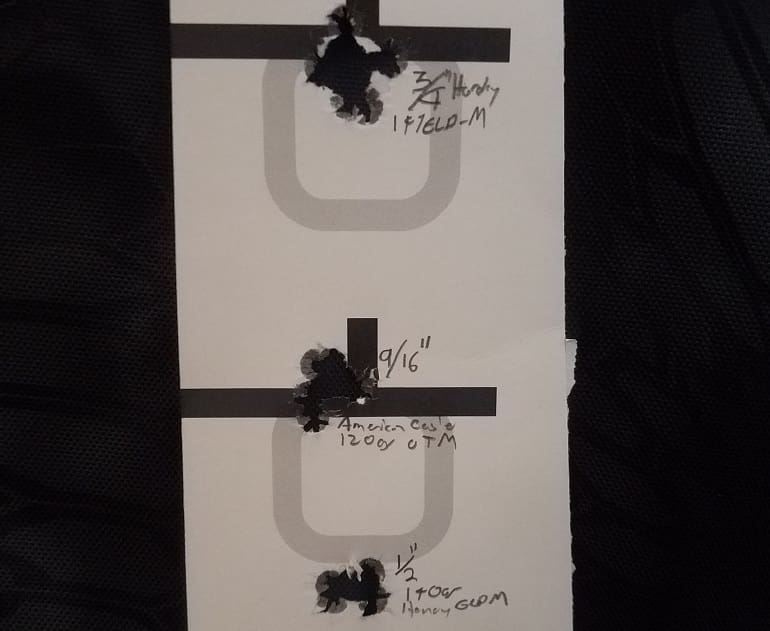
The best shooting factory round was the 140gr Hornady ELD-Match round, producing extremely consistent 1/2″ groups. The inexpensive 120gr OTM American Eagle round averaged 5/8″, with not quite the same level of consistency as the 140gr ELD-M.
Proving that barrels can be finicky beasts, the worst performing round was the Hornady 147gr ELD-M, printing consistent groups, just consistently larger than the bullet only 7 grains lighter, at 3/4″.
Those seven grains made a big difference, percentage wise. So I got another couple of boxes and headed to the Range at Austin to verify those results. A second round of shooting two new boxes at 100 yards indoors confirmed the initial shooting results.
From the worst shooting round to the best, any of those factory rounds performs well enough to be competitive in almost any of the shooting sports, save F Class. Development of a custom load at home would likely produce even better results.
Note that we’re only talking about a quarter of an inch or so difference in all of the commercial rounds tested. That’s fantastic consistency from a factory stock gun.
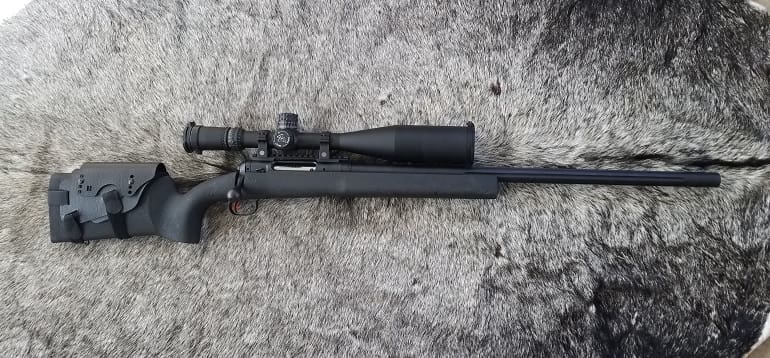
It’s nice to see more and more people interested in precision and long range shooting getting behind Savage rifles. When it comes to stock actions, I find them fundamentally better than the ubiquitous Remington.
The Model 12 Long Range Precision puts together what shooters want most. A good, rigid stock, accurate barrel, and a great trigger, all at a very reasonable price. It’s an excellent choice for the entry-level competitor, especially if they are choosing to shoot commercial 6.5 Creedmoor ammunition.
SPECIFICATIONS: Savage Model 12 Long Range Precision Rifle
Caliber: 6.5 Creedmoor
Barrel Finish: Matte
Barrel Length (in): 26
Barrel Material: Carbon steel
Magazine Capacity: 4 rounds
Hand: Right
Length of Pull (in): 13.75
Magazine: Detachable box magazine
Overall Length (in): 46.25
Rate of Twist (in):1 in 8
Receiver Color: Black
Receiver Finish: Matte
Receiver Material: Carbon steel
Type: Centerfire
Stock Color: Black
Stock Finish: Matte
Stock Material: Synthetic
Weight: 11 lbs.
MSRP: $1,310 (about $1,150 retail)
Style and Appearance * * *
Black on black. The finish is done well, but there’s nothing particularly striking about the gun in any way.
Reliability * * * * *
It’s a traditional Savage bolt action rifle action. I’d have been really surprised if anything went wrong. Nothing did.
Customization * * *
A big star off for no length of pull or comb height adjustment and a lack of a threaded muzzle. A star added for being a Savage and the ease of barrel swaps. It averages out to average.
Accuracy * * * * *
Legit 1/2″ center-to-center groups with factory ammunition is what it takes to get to 5 stars in a rifle of this class. With a custom load, I wonder how well it could really perform.
Overall * * * *
The perfect reliability, ease of barrel swaps for calibers that will definitely need them, and 1/2 MOA factory ammo groups put this rifle over the average for other rifles in its category. If I wanted another bench or varmint rifle, this would be high on my list.

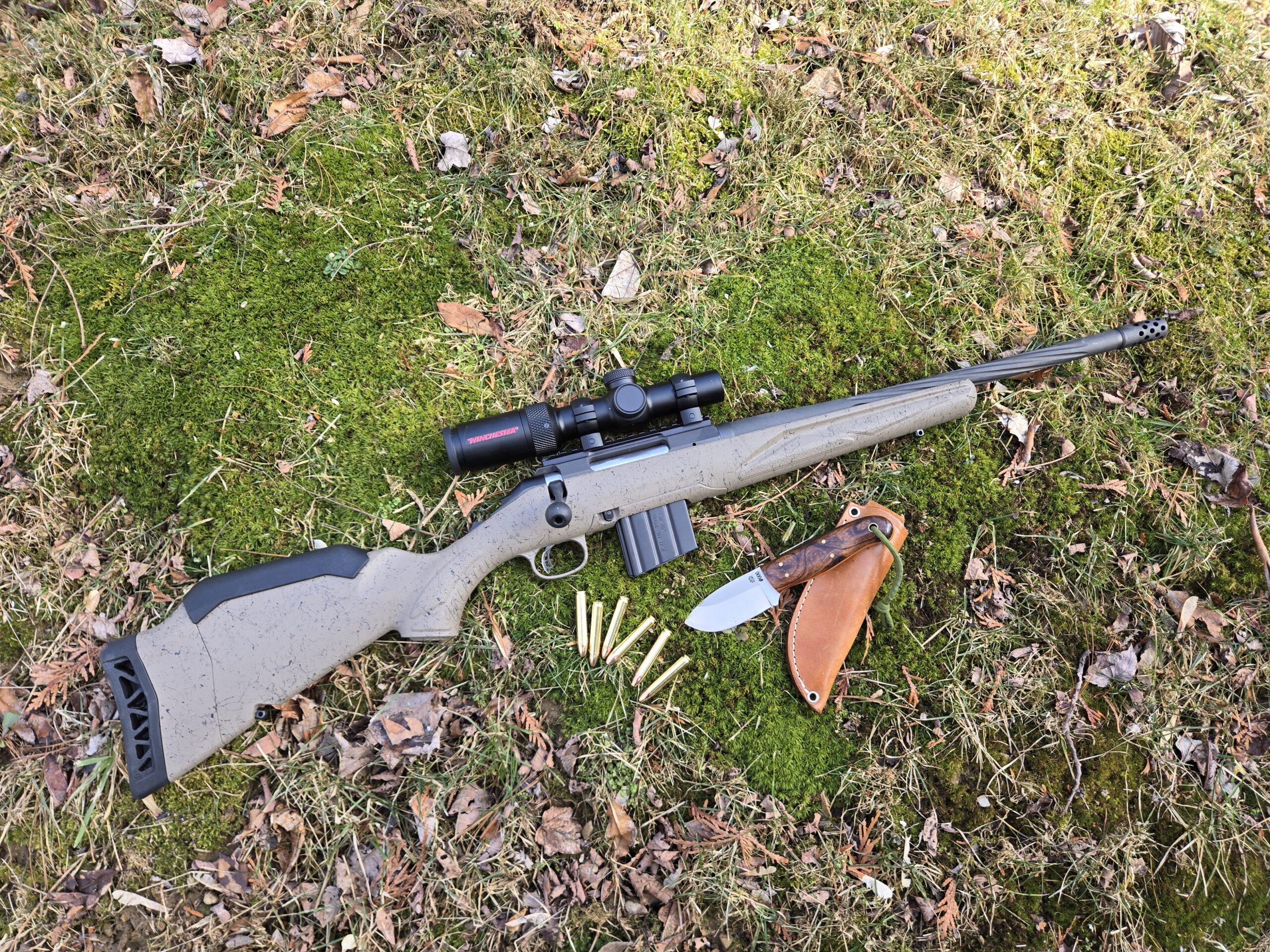
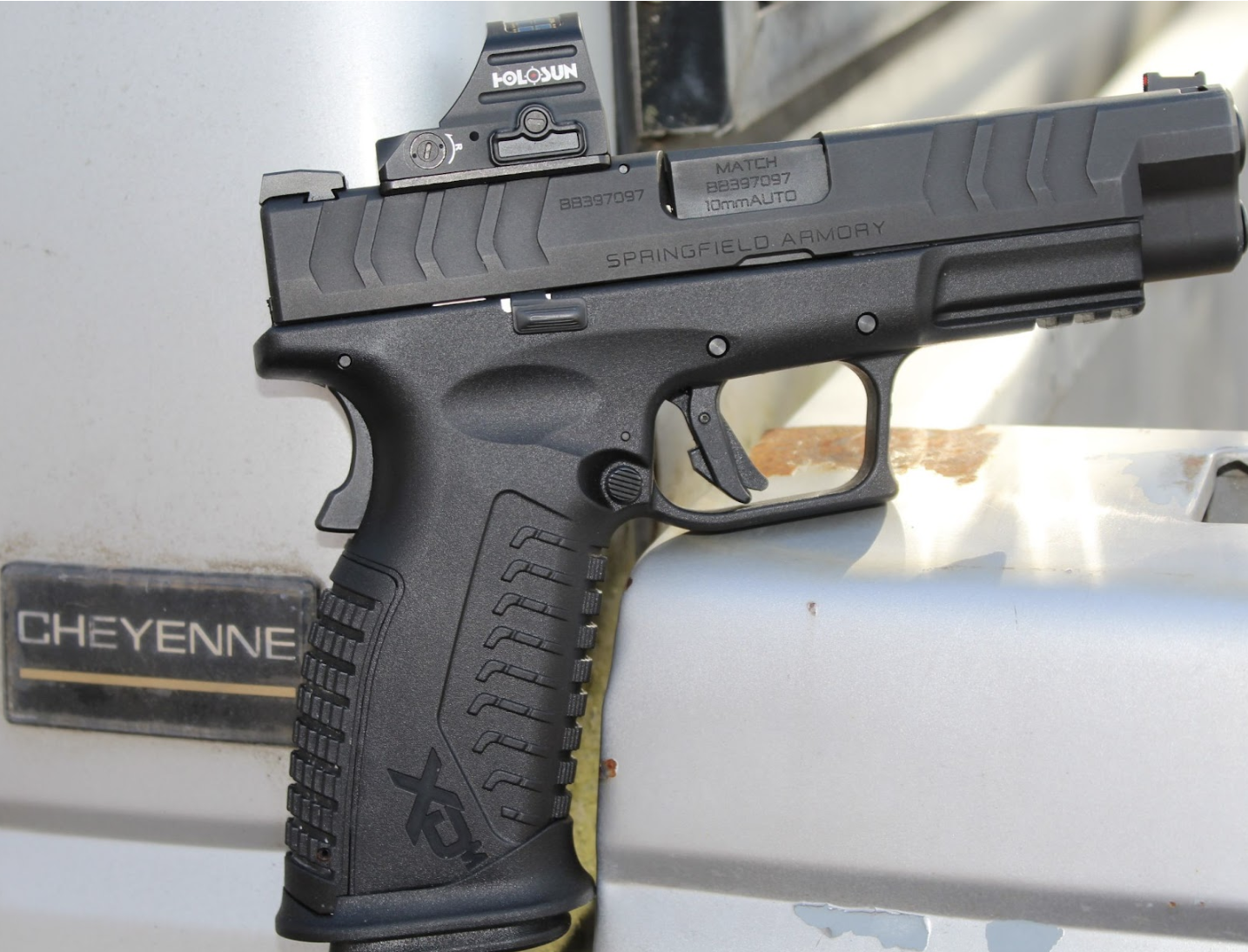
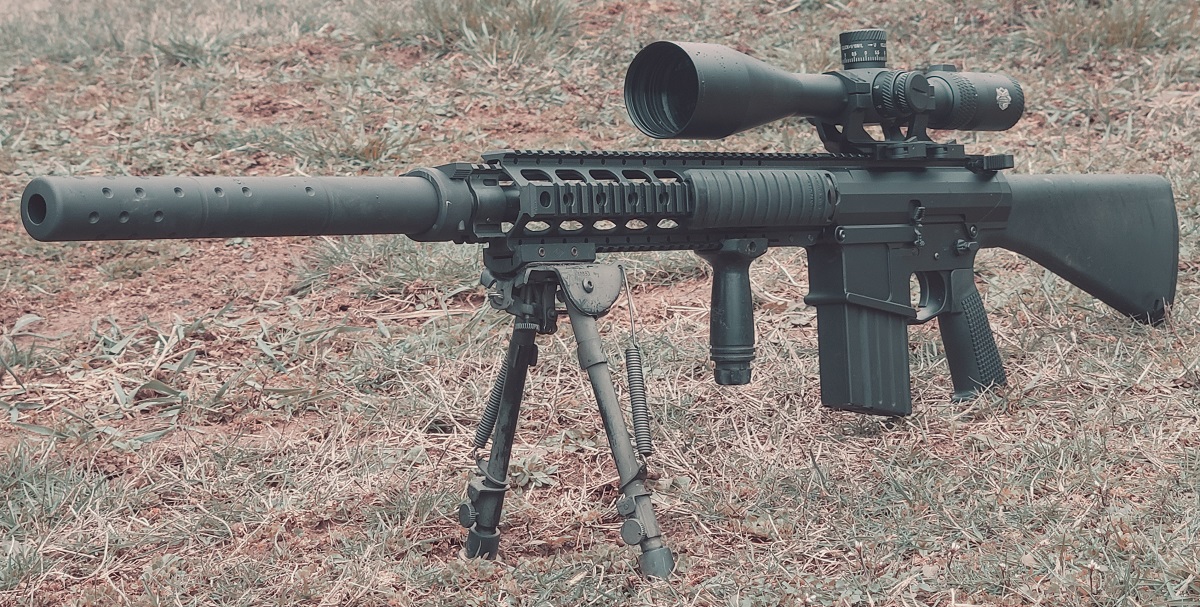




Thinking of swapping my 6.5 Creedmore barrel for a 308 barrel. Is this reccomended or frowned upon?